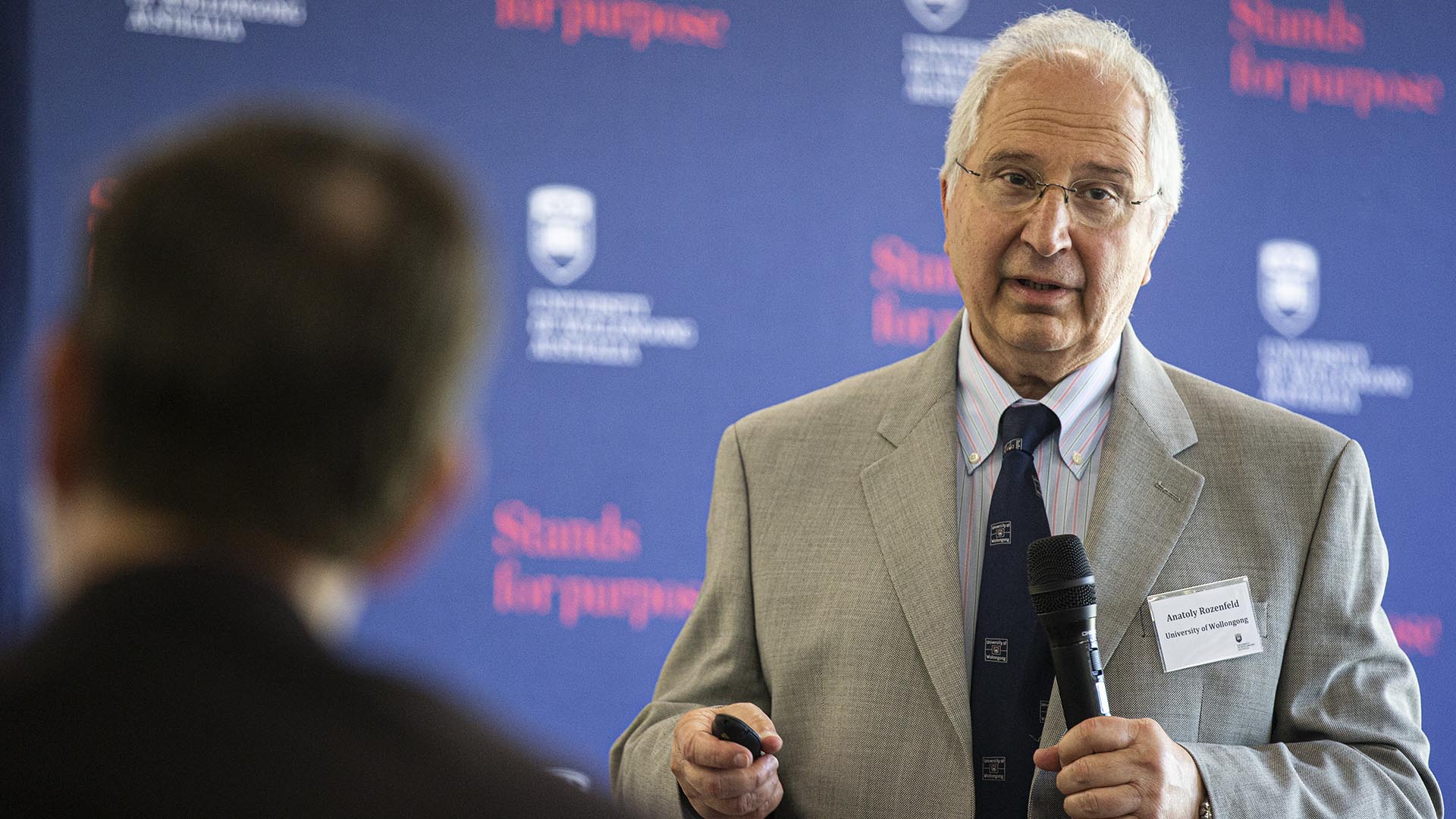World's most advanced, cost-effective medical radiation sensor technology to be commercialised

The University of Wollongong (UOW) launched a spinout based on a medical technology invention with massive global potential on Thursday 28 November, at an event on the main campus.
MOSkin is the world's most advanced and cost-effective medical radiation sensor technology. It was developed by researchers at UOW's world leading Centre for Medical Radiation Physics (CMRP), led by Distinguished Professor Anatoly Rozenfeld.
This next generation technology is a cost effective assurance tool that precisely measures radiation dose and dose rate, in addition to beam monitoring of transmitted radiation. Its design allows greater real time control of the amount of radiation delivered, leading to better outcomes for patients by reducing the incidence of under or over delivery of radiation.
MOSkin can be configured as an inexpensive, single use, disposable wireless sensor to measure precisely the intensity of each radiation dose received by a patient in real time during radiotherapy treatments for cancer.
It can also be used as a multi-use radiation measurement device for monitoring angiograms and diagnostic and interventional radiology scans.
MOSkin's special non-invasive technology monitors the amount of radiation the skin receives and hence reduces the potential for unwanted side effects.
By providing a highly accurate and reliable real-time measurement of medical radiation dose, MOSkin allows clinicians to be confident that they are targeting the cancer more effectively while minimising damage to surrounding healthy tissue.
"MOSkin radiation sensor technology provides peace of mind for the patient and physician," Professor Rozenfeld said.
"It is the only real-time radiation sensor that provides an accurate measure of dose to the skin during radiation therapy treatment or diagnostic radiology procedures."
Radiation is widely used for procedures such as angiograms and diagnostic and interventional radiology scans while radiotherapy is part of the treatment plan for up to 50 per cent of all cancer patients.
These procedures currently rely on techniques that offer limited accuracy and reliability to measure specific radiation dose and dose rate.
While current treatments are usually safe and effective, by some estimates, up to half of patients who receive radiotherapy will suffer some level of unwanted organ or tissue damage. This collateral damage can significantly affect a patient's health and, in some cases, directly result in early patient deaths.
Excessive radiation dose to normal tissues can also increase the probability of secondary tumours.
Developed over many years of research, MOSkin technology has been proven in multiple successful clinical tests in Australia, Europe, Brazil and Malaysia to be suitable for real-time radiation measurements.
"It was a long journey, more than a decade, and demanded a multi-skilled team and a lot of hard work, not just from me, but from all my CMRP team," Professor Rozenfeld said.
"I would like to acknowledge also our collaborators and clinical advisors. They brought strong value to our MOSkin invention by clinical testing on patients and demonstrating the advantage of this technology for quality control during the procedure. I would also like to acknowledge our long-term collaboration with dedicated microelectronic foundries.
"Both my parents passed away from cancer and finding the best treatment or improved treatment is my important role in society. Also, to simply help people to live longer and enjoy life even with cancer. It is always good to see that the outcome of your research is more than a published paper."
Electrogenics Laboratories Ltd has been granted the exclusive global licence for MOSkin.
A pre-IPO offering is underway seeking up to $4 million for up to 40 per cent shareholding. The company has plans to list on the Australian Stock Exchange within 12 to 18 months.
"Electrogenics is partnering with leading Australian engineering and compliance consultants and industrial designers to ensure this breakthrough Australian invention will be manufactured in Australia and commercialised globally," Electrogenics Chairman Kim Lyle said.
"This is a very exciting time for all of us at Electrogenics."






